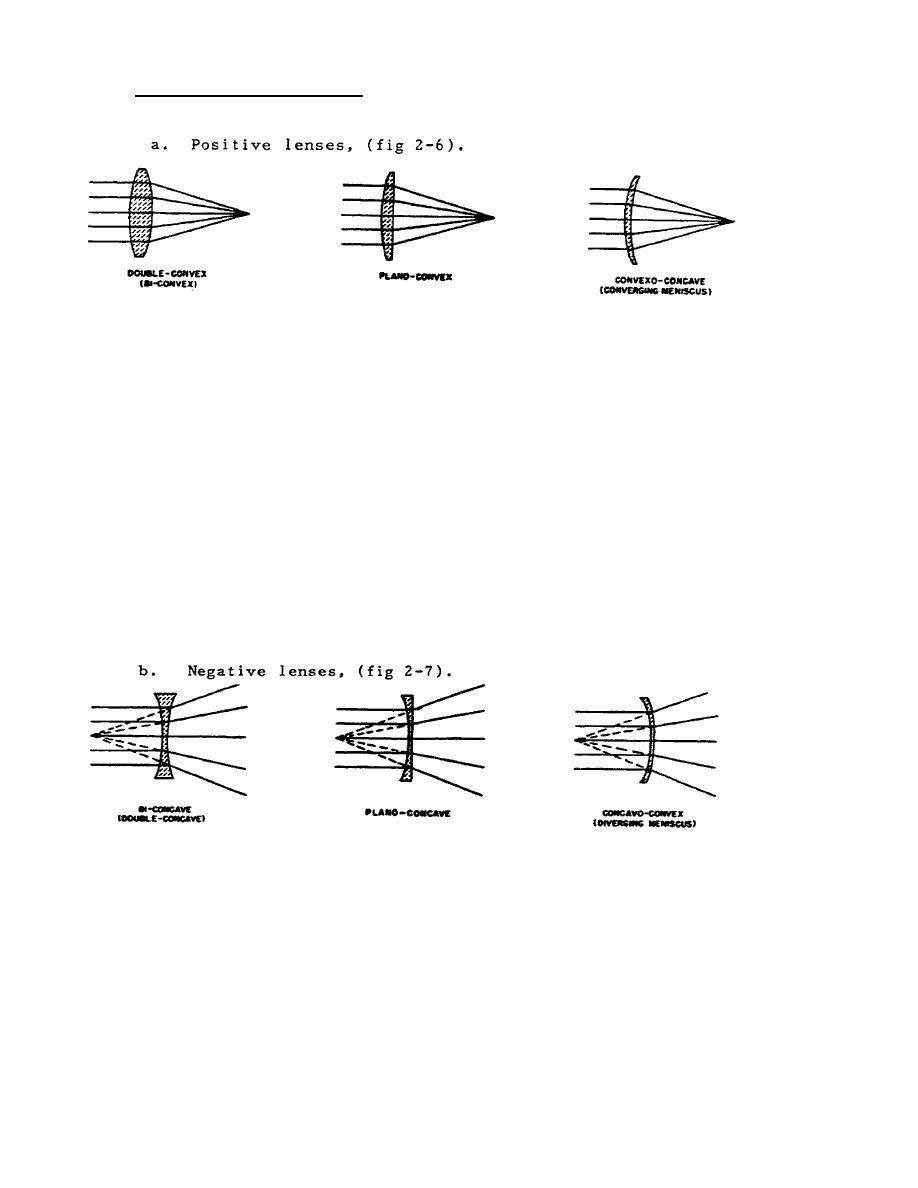
2-5. TYPES OF SINGLE LENSES.
Single lenses are divided into two general
classes; positive lenses and negative lenses.
Figure 2-6.
Positive Lenses.
Positive lenses form real images because light rays passing through such lenses
cross. Lenses in this class are also termed convex, convergent, or collective.
Positive lenses, which are convex lenses, are thicker in the center than at the
edges and converge light rays.
However, one surface may be convex while the
other is flat, or one surface may be convex while the other is concave.
(1) Double-convex lenses (bi-convex) have two convex surfaces.
Both
surfaces contribute to the converging characteristics of the lens.
(2) Plano-convex lenses have a plane surface and convex surface. The
plane surface does not contribute to the converging characteristics of
the lens.
(3) Convexo-concave lenses (converging meniscus) have both a convex
and a concave surface.
The more pronounced convex curve makes this a
positive lens despite the fact that the concave surface spreads light and
subtracts from the converging characteristics of the lens.
Figure 2-7.
Negative Lenses.
85



 Previous Page
Previous Page
